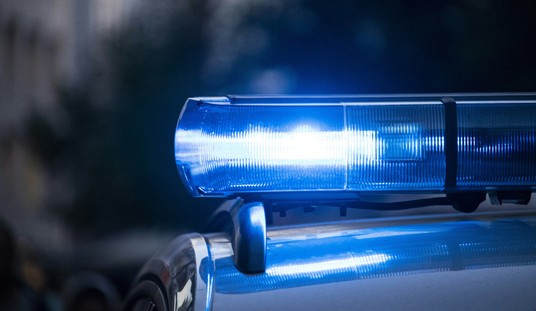In the 1990’s there were several lawsuits filed against police departments across the country alleging racially based traffic stops and racial profiling by police. In some cases these lawsuits were not successful, in others departments were found to be profiling due to statistical evaluations of the people they pulled over. In response to these lawsuits departments started installing cameras inside police cars, and the federal government even created an incentive program for departments to install the cameras in as many vehicles as possible. The end result is that vehicle mounted camera systems are now commonplace. These systems have also shown that in most cases the Officers act in a professional manner and in accordance with their training during traffic stops. They have also captured how Officers are treated by the public and provided hard evidence of Officer Conduct when allegations are made by the suspect of police brutality. In a limited number of cases, departments have been able to identify Officers who have violated Department Policy or the law. The video has also been invaluable in training future officers and for continued training of current officers. Technology has advanced considerably over the past 25 years to a point where everyone has a video camera on their phone and routinely video tape policy in the performance of their official duties.
The public’s ability to monitor and video tape police has led to several issues such as video quality, chain of custody issues, and potential for tampering. This has led to the advent of body worn video recording devices, or body cameras. Body cameras are small devices worn by the individual officers that record what the officer sees from his point of view. Some cameras also have the ability to record audio as well as video. Body Cameras are viewed favorably by both the public and Law Enforcement. A survey of both citizens and Law Enforcement found widespread support for the use of body cameras. That survey published by PoliceOne in 2014 found 88% of the public surveyed support all Law Enforcement Officers wearing body cameras, with 56% “strongly supporting” the idea. Even within Law Enforcement 68% support all officers wearing body mounted cameras. Both the public and Law Enforcement see body cameras as a protective measure against wrongful accusations against police, having a factual record of the events as they occurred from the officer’s perspective, and evidence to assist in criminal convictions. Body cameras also will help rebuild confidence in Law Enforcement among the public, especially minorities after several high profile cases where body cameras would have provided helpful information.
There are several factors that must be taken into consideration in the use of the video footage for training, use as evidence, and in investigating complaints of officer misconduct. While video is seen as a tell all and factual record, which it is for the most part, there are things that must be taken into account that complicate the public’s perception that Body-Worn Camera are a panacea to all ills concerning real or perceived officer misconduct. There are many limitations inherent within the technology that must be addressed. These limitations may as technology improves be minimized or eliminated altogether, but until technology allows the viewer to see exactly what the officer sees, and how they see it these issues will persist.
Body-Worn Camera do not follow the officer’s eyes or see exactly what they see. While different cameras have different fields of view, and mount differently depending on the model, none currently see exactly what the officer sees. This becomes important in that the camera may record one thing, but the officer sees another. There are currently two main methods of mounting Body-Worn Cameras, head mounted and body mounted. Head mounted units will follow the direction that the head is facing, but since human eyes are not permanently mounted facing forward, there is the possibility that the camera will be facing one direction with its field of view and the officer’s eyes may be pointed in a separate direction with the eyes specific field of view. The issue becomes more relevant when body mounted cameras, which are favored by most departments. If the camera is affixed to the front of the officer it will record everything within the cameras field of view in front of the officer. However, the officer will see everything within his eyes field of view as the move, and as their head moves left, right, up, and down. To complicate matters the human eye and brain can and will react to stress and adrenaline by tunneling and making objects that are threatening appear faster and larger than will appear on camera. There is unfortunately no current technology to rectify these issues.
Body-Worn Camera do not capture all things the officer experiences in an interaction that may lead to the use of force. Humans have five senses, sight, sound, smell, touch, and taste. Body-Worn Cameras only record two of these. One sense that is not recorded but is highly relevant is touch. As an officer touches a suspect, he can feel if the individual is tensed and may indicate they will resist. Nor will a camera record that this individual has resisted previously, or had other altercations with the officer. Officers are trained to look at the entire situation and may see cues from an individual that may appear as nothing to a civilian viewing the recording but will signal danger to a trained officer. The prime example is an individual putting his hands up, while that may signal surrender to a civilian, it can appear combative and dangerous to an officer, especially if the individual has weapon or is within 7 feet. Officers are trained to respond based on all the information they have, to include touch, taste, and smell which are not recorded by Body-Worn Camera.
Body-Worn Camera record based on camera speed, or “frames per second” and not at the speed of real life. Body-Worn Camera all have a rating known as “Frames per Second” which is how many pictures are taken per second. The frames per second for the top brands range from 15-60 frames per second with most set at 30 frames per second. This leads to the potential that something that the officer saw, may not have been captured such as a flash or glint from a knife that was short enough to fall between frames of the video, especially in low light conditions. Further, what no video can record is the inherent human reaction time. What may seem like an eternity on film is in fact a split second for the officer. It takes time for the human body to see, evaluate, decide, and then react to new inputs. Cameras do not have this delay. This can lead to a camera showing an officer taking an additional shot at a suspect that the camera may show as being unwarranted, but is warranted when human reaction time is considered.
Most of the available Body-Worn Camera have the ability to see in low light conditions. The human eye is not equipped to see in low light conditions as well as a camera. This is why the military and law enforcement use night vision devices, thermal imaging, and FLIR. There is the real possibility that what the officer saw and how he saw it due to light conditions may not be recorded the same way by a camera with night vision technology. What may look like a knife or a firearm to an officer in low light conditions may clearly be something innocuous on camera. While we have been highlighting the inferiority of the human eye to a camera, there is one area where the eye is far superior, light transition. The human eye has the incredible ability to adjust to varying light conditions that my blank out a camera momentarily and not capture something the officer sees. When going from low light night vision to bright light conditions the human eye adapts near instantaneously, while the camera may take a second to adjust to the new light conditions, we have all seen this effect when trying to take pictures with our cellphones.
The Body-Worn Camera only records what is directly in front of it. While this is the primary purpose, the placement of the camera is very important as during a chase or when struggling with an individual the cameras lens may become inadvertently obscured. This is exceptionally important with chest mounted cameras in shooting incidents. If an officer brings his weapon up to shoot, his arms, his service weapon, etc. may obscure the Body-Worn Camera at a critical moment. Testing should be done on each individual officer during training to ensure proper placement. For example, the officer should wear the camera and draw his duty weapon, Taser, radio, and other tools and then the footage should be reviewed to ensure that the camera is not blocked at critical moments. If it is blocked, then reposition and test again. Supervisors should ensure that proper placement occurs during each shift and individual officers should ensure proper placement when exiting vehicles as the seatbelt can shift the camera.
Body-Worn Camera only record in two dimensions whereas the officer sees in three dimensions. Due to the small size of camera lenses and their wide angle field of view the image can be distorted. This distortion can make objects or people seem farther away, and therefore less of a threat when the video is reviewed. This also means there is no proper depth perception. Proper care should be used in reviewing recordings with these distortions in mind.
Body-Worn Cameras encourage second guessing. When a video is dissected frame by frame after the fact, and with no threat to life all options the officer could have taken can be taken into account. However, the officer did not have that opportunity in a high stress, adrenaline influenced fluid situation. For this reason, outside of use in training other officers, any review of a recording should focus on the officer’s actions and whether those specific actions were justified. The officer’s actions should not be judged based on the multitude of other potential actions they could have taken, only those they did take. However, this highlights where recordings of real life situations can be highly effective in training other officers who have the time in a training environment to assess different solutions, which will translate into different reactions in similar situations and hopefully better outcomes for both the officers and individuals involved.
The one thing to remember is that while Body-Worn Cameras are an invaluable tool, nothing can replace a thorough investigation. As demonstrated, Body-Worn Cameras are not a fool proof method of evaluation. Human reaction times, limitations inherent in the human body, and limitations in camera technology all need to be considered when conducting an investigation of criminal activity and officer misconduct. Trust the officers involved, but use the video recordings to verify their account and if their account is consistent within the limitations cited, then the truth will most likely be known.













Join the conversation as a VIP Member